Spain-Infos September: Spain, the world's largest olive producer
With its mythical aura and gnarled shape, the olive tree was introduced to Spain 2,500 years ago by the Phoenicians and is now found throughout the Mediterranean. Some trees are several hundred years old. This is precisely what makes their wood, which is only used for small utensils or as firewood, so expensive. In the wild, the trees grow up to 15 metres high, but on plantations they are generally much smaller so that the olives can be harvested more easily and processed into oil.

(Picture license from depositphotos)
Spain alone has around 260 different varieties of olive. It is the country with the greatest diversity of varieties and the largest cultivated area. While some varieties have a sweet aroma, others are characterised by tangy, fruity or even bitter flavours.
A small olive lesson:
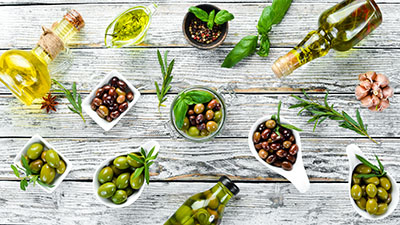
(Picture license from depositphotos)
Arbequina is one of Spain's best-known olive varieties. The black fruit, which contains virtually no bitter substances, produces a mild, light oil. Its fruity, sweet aromas are reminiscent of apples, bananas, artichokes and almonds is ideal for salad dressings or for making the garlic mayonnaise, alioli.
The ancient Empeltre variety is widespread in Spain. "Empelt, the Catalan word for cork, gave its name to the olive. The pale yellow, sweet oil is perfect for preparing vinaigrettes and marinades.
With a cultivated area of over 900,000 hectares, the Picual is the most widely grown olive in the world. This is because the fruit is not rounded at the end, but has a small point, a "pico", hence its name. Its slightly greenish oil has a full-bodied, fruity flavour.
Another basic variety of olive from Spain is the Cornicabra. Its name is made up of "Corni" from "cuerno", the horn, and "cabra", the goat. This is explained by the curved shape of the green fruit, which bears a slight resemblance to a goat's horn. The golden-coloured oil has a very distinctive aroma. It is an excellent accompaniment to game or vegetable dishes.
Dark purple olives, known as Picudo, come mainly from Andalusia. Picudo oil is yellowish-green in colour and highly aromatic, far surpassing conventional olive oils in terms of flavour. It is distinguished by a bouquet of apples, almonds and olive leaves. It's perfect for dressing salads.
Almost 70% of Spanish olive oil is produced in Andalusia. This is where the Royal olive variety thrives, grown almost exclusively in mountainous regions. The fruit is a deep dark red colour with light-coloured flesh. The oil contains virtually no bitter substances and has a pleasantly sweet note reminiscent of figs. It can be used in pastries and to refine Salmorejo's cold vegetable soup.
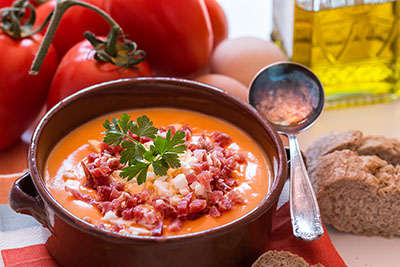
(Picture license from depositphotos)
Hojblanca is a variety of olive with green flesh, often enjoyed as a whole fruit. Its flavour is reminiscent of artichokes, herbs and freshly cut grass. The sweet, bitter and slightly spicy flavours combine to create an unusual taste experience. Hojblanca oil is ideal for marinating meat and fish, for stews and for a delicious gazpacho.
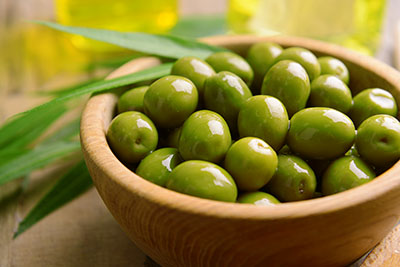
(Picture license from depositphotos)
Manzanilla, which is fleshy and aromatic, is also highly prized as a table olive. As an oil, it offers a pleasant balance between sweet, fruity, bitter and spicy. It can be enjoyed as a spread or in vinaigrettes. Green oil can also be used for frying.
And then there's Mallorquina. Studies have shown that its chemical composition differs from that of other Mediterranean olives. It is a close relative of the wild olive. The marine climate, the soil conditions and the natural fertiliser from goats and sheep are responsible for its very distinctive flavour.
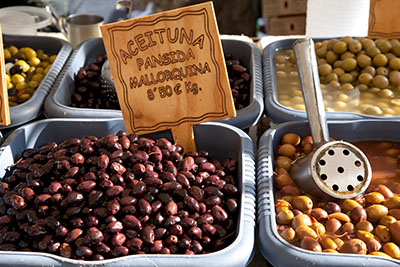
(Picture license from depositphotos)
So it makes a huge difference whether a tree bears only 7 or 20 kilos of fruit. The yearly consumption of olive oil in Spain is no less than 12 litres per person!
Olive oil consumption in Europe:
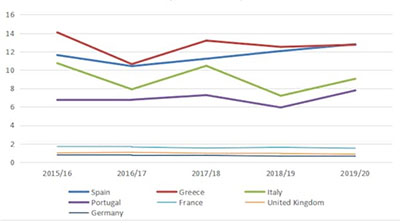
(Olive oil consumption by countrydata published by the International Olive Council)
Olive trees blossom from the end of April to the beginning of June. After that, the olives form. The harvest of the fruits begins in October and ends in March. Then the oil is pressed.

(Picture license from depositphotos)
The result: extra virgin olive oil - the purest olive juice directly from the fruit. Only the first harvest of the year can call itself "extra". During the (cold) pressing, the juice must not exceed a temperature of 27 degrees. Virgin olive oil without the additional designation "Extra" is produced from olives of lower quality or from subsequent harvests.
Spanish table olives are sold with stone but there are also pitted olives, or varieties that are refined with various fillings of anchovies, peppers, garlic, even cheese.
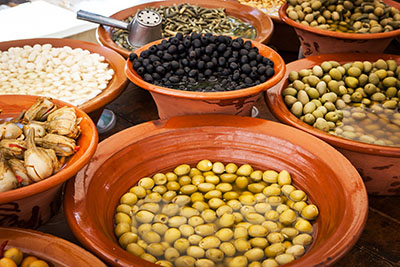
(Picture license from depositphotos)
Olives are, like most products we taste on holiday, better locally ![]() !
!
So feel free to come and visit us, maybe we will find (besides a great market stall with olives) the right property for you in Spain.
You will find some interesting properties below, for a greater choice visit our website www.sucasita.eu.
And if you have any general questions about buying a property in Spain or would simply like some non-binding information: Feel free to call us! (+34) 966 790 012.
Kind regards,
Jan Hannemann and the Su Casita team



